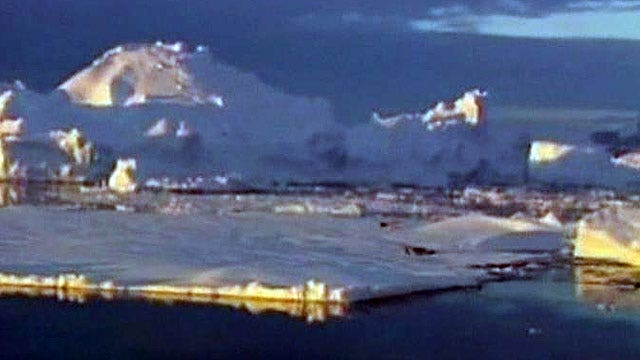WASHINGTON – Feeling chilly? Here's cold comfort: You could be in East Antarctica which new data says set a record for "soul-crushing" cold.
Try 135.8 degrees Fahrenheit below zero; that's 93.2 degrees below zero Celsius, which sounds only slightly toastier. Better yet, don't try it. That's so cold scientists say it hurts to breathe.
A new look at NASA satellite data revealed that Earth set a new record for coldest temperature recorded. It happened in August 2010 when it hit -135.8 degrees. Then on July 31 of this year, it came close again: -135.3 degrees.
The old record had been -128.6 degrees, which is -89.2 degrees Celsius.
Ice scientist Ted Scambos at the National Snow and Ice Data Center said the new record is "50 degrees colder than anything that has ever been seen in Alaska or Siberia or certainly North Dakota."
"It's more like you'd see on Mars on a nice summer day in the poles," Scambos said, from the American Geophysical Union scientific meeting in San Francisco Monday, where he announced the data. "I'm confident that these pockets are the coldest places on Earth."
However, it won't be in the Guinness Book of World Records because these were satellite measured, not from thermometers, Scambos said.
"Thank God, I don't know how exactly it feels," Scambos said. But he said scientists do routinely make naked 100 degree below zero dashes outside in the South Pole, so people can survive that temperature for about three minutes.
Most of the time researchers need to breathe through a snorkel that brings air into the coat through a sleeve and warms it up "so you don't inhale by accident" the cold air, Scambos said.
On Monday, the coldest U.S. temperature was a relatively balmy 27 degrees below zero Fahrenheit in Yellowstone, Wyo., said Jeff Masters, meteorology director of the private firm Weather Underground.
"If you want soul-crushing cold, you really have to go overseas," Scambos said in a phone interview. "It's just a whole other level of cold because on that cold plateau, conditions are perfect."
Scambos said the air is dry, the ground chilly, the skies cloudless and cold air swoops down off a dome and gets trapped in a chilly lower spot "hugging the surface and sliding around."
Just because one spot on Earth has set records for cold that has little to do with global warming because it is one spot in one place, said Waleed Abdalati, an ice scientist at the University of Colorado and NASA's former chief scientist. Both Abdalati, who wasn't part of the measurement team, and Scambos said this is likely an unusual random reading in a place that hasn't been measured much before and could have been colder or hotter in the past and we wouldn't know.
"It does speak to the range of conditions on this Earth, some of which we haven't been able to observe," Abdalati said.





















